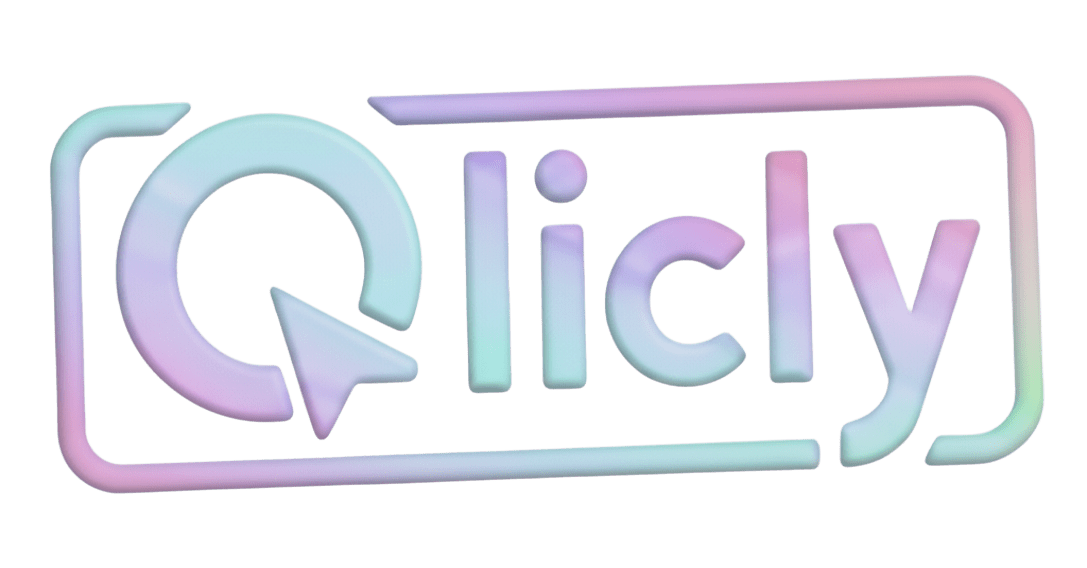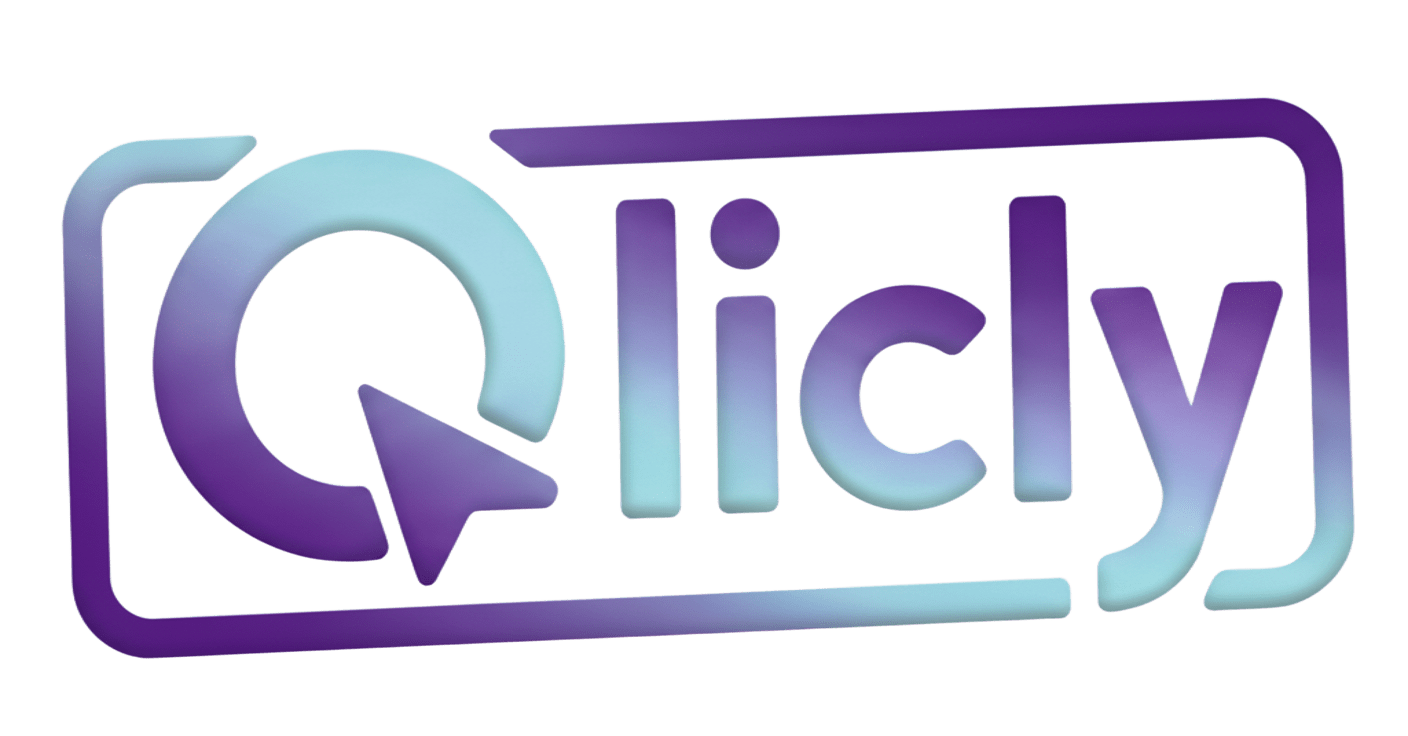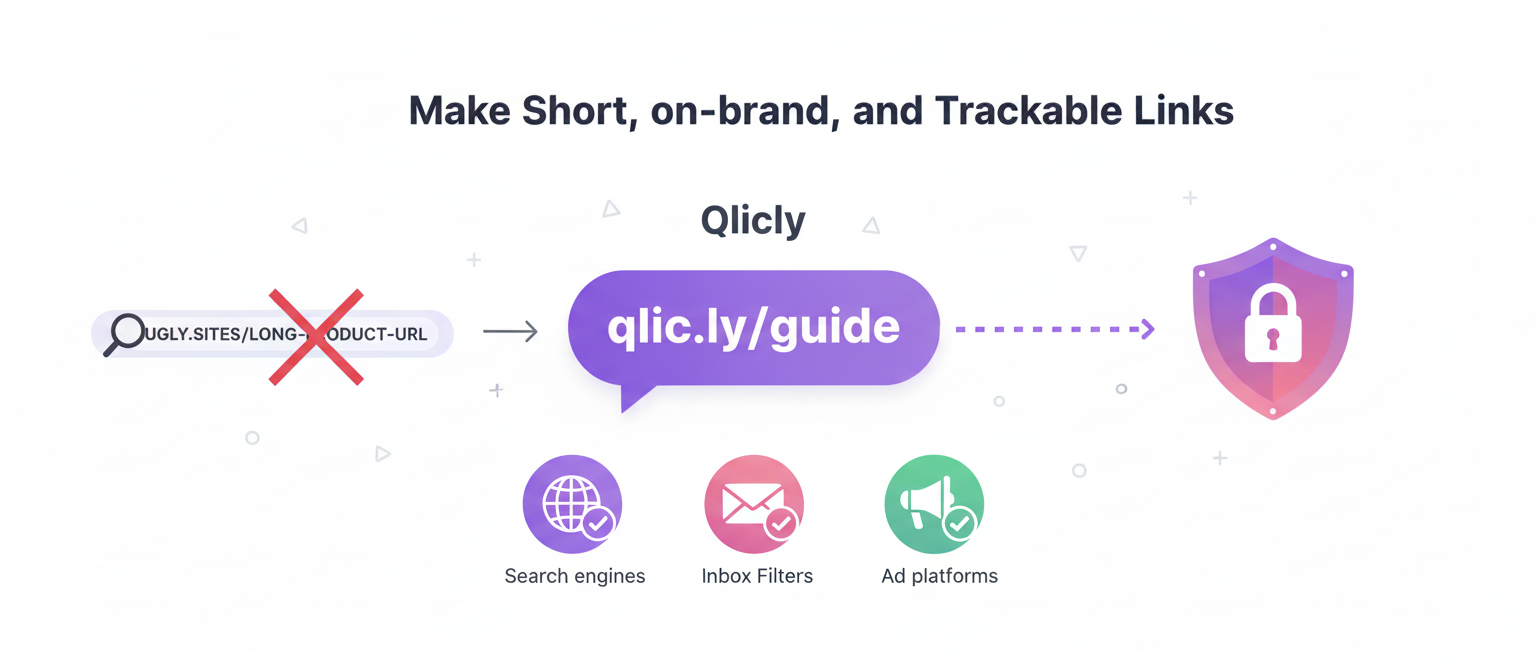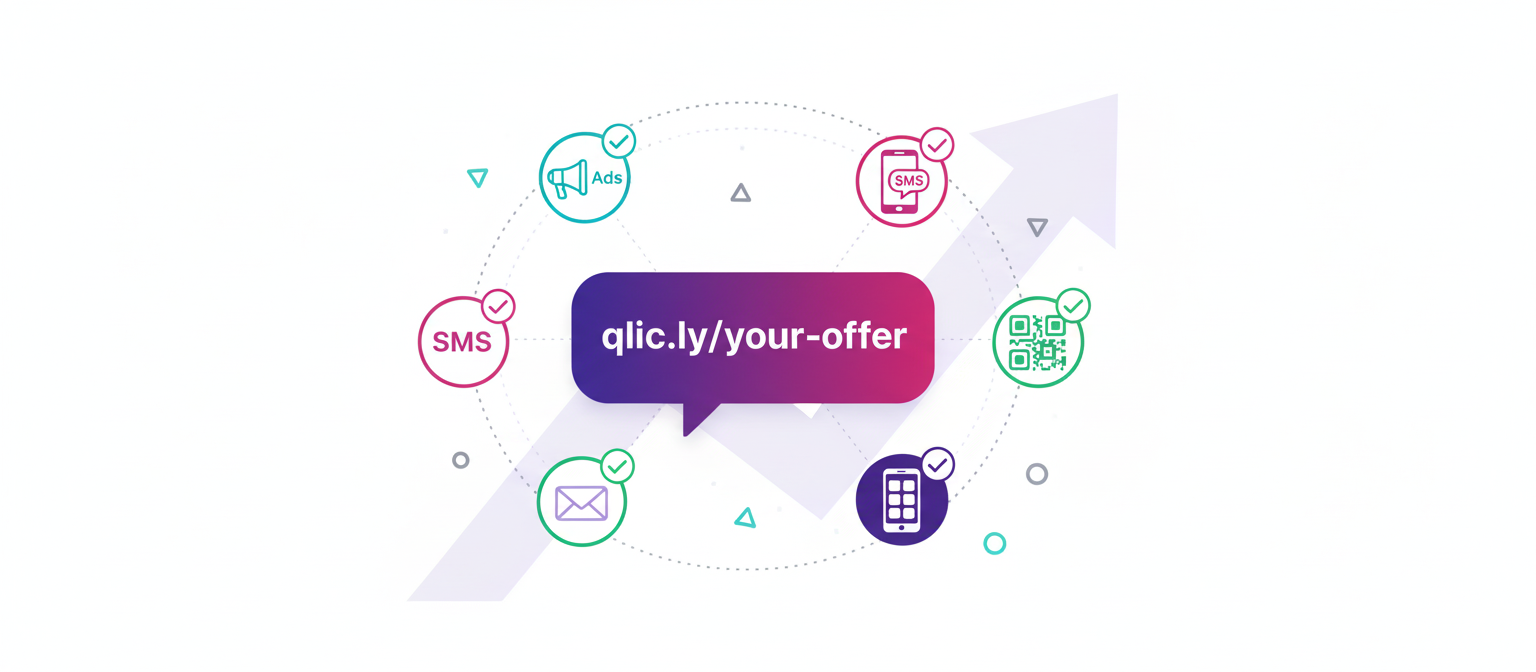
TL;DR: Affiliate links are unique URLs that track referrals from creators or publishers to a brand. When someone buys (or completes an action) after clicking your link, you earn a commission. Tracking relies on browser pixels/cookies and increasingly on server-to-server “postback” methods. Disclose clearly, follow each program’s rules (e.g., Amazon), and use branded short links to improve trust, readability, and analytics. The list below shares 17 high-performing ways to share affiliate links—complete with real-world examples like qlic.ly/summer-kit.
What is an affiliate link?
An affiliate link is a special URL that contains your unique identifier (publisher ID, tracking ID, or encrypted ID). Networks and advertisers use it to attribute clicks, leads, and sales back to you so the right partner gets paid. Many networks describe affiliate links as “special URLs … with your unique ID” used for tracking commissions[3].
How affiliate links work (step by step)
- Join a program or network. You apply to a brand’s in-house program or to networks like Awin, CJ, or Rakuten. Once approved, you receive link-building tools and unique tracking parameters[3].
- Share your link. You place links in content (blog, video descriptions, socials, newsletters, QR codes, etc.).
- Tracking fires on click.
- Attribution window & model. Programs set a time window (e.g., 7–30+ days) and a model (often last-click; sometimes first-click or coupon/voucher attribution rules). Always check each program’s terms[3].
- Commission is paid. If the conversion qualifies under the program’s rules, your account accrues commission.
Anatomy of an affiliate link (with UTM example)
A typical link looks like this:
https://merchant.com/product?affid=pub_123&subid=video01&utm_source=youtube&utm_medium=video&utm_campaign=summer_launch
affid/subid identify you and the campaign internally; optional UTM parameters feed your analytics (e.g., GA4) so you can see what content drove the click. See Google’s documentation on supported UTM parameters[2].
Compliance & disclosures (don’t skip this)
In the U.S., the FTC’s Endorsement Guides require clear, conspicuous disclosures wherever you include affiliate links—short, plain-language notices near the link or recommendation (e.g., “#ad”, “(paid link)”)[1].
Amazon-specific notes: Amazon’s Associates help pages emphasize proper disclosure and provide guidance for sharing affiliate links in various contexts. For international auto-redirect (OneLink), Amazon supports specific link formats; avoid using third-party shorteners in ways that obscure that the destination is Amazon. Always review the latest Operating Agreement and policy updates before you share[5][6].
Why use a branded short link?
- Trust & higher CTR. Branded links often lift click-through rates compared to generic shorteners; tests report meaningful gains[7].
- Readability. Short, human-friendly slugs (e.g.,
qlic.ly/deal) look better in bios, captions, podcast reads, and print. - Analytics. Pair short links with UTMs to see which channels and creatives pull weight in GA4[2].
- Flexibility. Update destinations, rotate offers, or route by device/geo without changing the public link—supported in Qlicly’s platform and API[9].
- Branding control. Put your name on every click with a custom domain[10].
Tip: Avoid legacy shorteners that are being deprecated (e.g., migrate old goo.gl links if applicable)[8].
17 best ways to share affiliate links (with examples)
- Hands-on reviews & buying guides. Publish deep reviews, unboxings, “best of” lists, and seasonal roundups. Example link:
qlic.ly/summer-kit. Pair with comparison tables. - How-to tutorials & recipes. Show the product in a step-by-step workflow with images, FAQs, and a clear CTA. Example:
qlic.ly/espresso-setup. - Comparison pages. “A vs B vs C” formats convert well for high-intent readers. Example:
qlic.ly/noise-cancel. - YouTube descriptions + pinned comments. Add your link near the top of the description and pin it in comments. Example:
qlic.ly/lens-vid. Disclose verbally and in text[1]. - Short-form video (TikTok, Reels, Shorts). Use on-screen captions and drive to your Qlicly bio page for multiple links. Example:
qlic.ly/podcast-kit[11]. - Instagram Stories & link stickers. Pair a teaser with a “Try it” sticker. Example:
qlic.ly/try-boost. Add a short disclosure (“ad”)[1]. - Pinterest Pins & Idea Pins. Create vertical visuals; put the link in the Pin or direct to a blog post with links. Example:
qlic.ly/pin-bundle. - Email newsletters (program-permitting). Send to an opt-in list, with an easy opt-out, and clear disclosure. For Amazon, consult current policies and use Amazon’s supported link formats as applicable. Example:
qlic.ly/weekly-picks[5][6]. - Podcast show notes & spoken URLs. Read a memorable slug (“Find the list at
qlic.ly/mic-list”) and include it in the notes. - Webinars & live demos. Drop the link in chat and follow up with a recap email linking to a resource page.
- Link in bio hubs. Aggregate evergreen offers on a branded bio page (e.g., “Tools I Use”). Build one with Qlicly Bio Pages. Example:
qlic.ly/tools[11]. - Resource libraries & “Deals” pages. Keep a single, frequently updated page of recommended tools. Example:
qlic.ly/deals. - SMS (opt-in, compliant). Short, valuable messages to subscribers with a direct call-to-action. Example:
qlic.ly/sms-offer. Ensure proper consent and program rules[5]. - QR codes for offline. Put dynamic QR codes on packaging, flyers, event booths; scans lead to your short link. Create trackable codes with Qlicly QR Codes. Example:
qlic.ly/booth-demo[12]. - Communities (Discord, forums, subreddits). Share only when relevant and allowed by community rules; lead with value.
- Downloadables (check your program). Many programs allow affiliate links in PDFs/ebooks; some restrict this. If restricted, link to your web page (with affiliate links) instead. Always confirm current rules before including direct links[5].
- Paid media (if permitted). Some programs prohibit sending paid ad traffic directly to affiliate links or to certain merchant sites via search ads; route to compliant landing pages when needed. Review program rules[5].
Set up for success: practical tracking tips
- Standardize UTM tagging. Use
utm_source,utm_medium,utm_campaign(and optionallyutm_content,utm_term) to see which channel and creative drive results in GA4[2]. - Shorten consistently with a branded domain. Own your presentation and build recognition (see Qlicly Branded Domains)[10].
- Deep link to apps automatically. If a user has the app, open it; otherwise, send them to the correct app store—Qlicly supports smart deep linking[9].
- A/B test link placements and offers. Rotate links or split traffic to see what performs—campaign rotators and updates via API help here[9].
- Route by device/geo/language. Match users to the best destination (e.g., country store, mobile page). Supported in both UI and API[9].
- Preserve critical parameters. Ensure your shortener passes through
subid,utm_*, orclickidas needed[9].
Program & platform rules: the must-knows
- Disclose every time. Put the disclosure where the recommendation happens, in the same medium (text for text, voice for voice, etc.)[1].
- Amazon do’s & don’ts evolve. Use approved link formats where required (e.g., OneLink), avoid making links misleading about the destination, and keep up with policy updates[5][6].
- Search and paid ads. Some programs restrict sending traffic from certain paid search placements directly to their site via affiliate links; check prohibitions and route to a compliant page when needed[5].
Common mistakes to avoid
- Hiding the relationship. Vague or missing disclosures violate guidance and erode trust[1].
- Using unsupported shorteners or deprecated links. Avoid shorteners not supported by your program’s tools (e.g., for Amazon OneLink) and migrate away from legacy services like
goo.gl[6][8]. - Ignoring attribution windows. If your content gets late conversions, advocate for cookie/S2S setups and windows that match your customer journey[3][4].
Affiliate link examples (Qlicly-style)
- Simple short link:
qlic.ly/espresso-setup - With UTMs:
qlic.ly/espresso-setup?utm_source=youtube&utm_medium=video&utm_campaign=espresso_launch - Country/device targeting: one short URL that routes iOS to the App Store, Android to Google Play, and desktop to a web page (smart deep linking)[9].
Conclusion
Affiliate links power a huge slice of performance marketing—and they’re only getting more sophisticated. The winning playbook is simple: disclose clearly, follow each program’s policies, give your audience genuine value, and instrument your links so you can see what’s working. Branded short links make your URLs memorable and measurable while preserving the tracking parameters you and your partners need.
Ready to put this into practice? Spin up a custom short link and bio page with Qlicly, connect your domain at Branded Domains, and create your first trackable QR at QR Codes[9][10][12].
References
- Federal Trade Commission (FTC). (2023). Endorsement Guides: What People Are Asking. Guidance (Article).
- Google Analytics Help. (n.d.). Collect campaign data with custom URLs (UTM parameters). Help (Doc).
- Rakuten Advertising. (n.d.). Tracking technology overview (cookies, pixels, attribution windows). Help (Article).
- Awin. (n.d.). Server-to-Server (S2S) tracking guidance. Help (Article).
- Amazon Associates. (n.d.). Program policies and operating agreement. Policy (Help Center).
- Amazon Associates. (n.d.). OneLink and supported link formats. Help (Doc).
- Rebrandly. (n.d.). Branded links CTR lift (case studies). Case Study (Article).
- The Verge. (2025). Sunsetting Google’s
goo.glURL shortener (deprecations). News (Article). - Qlicly. (n.d.). Platform features: deep linking, device/geo routing, rotators, parameters. Product (Page).
- Qlicly. (n.d.). Branded Domains. Product (Page).
- Qlicly. (n.d.). Bio Profiles. Product (Page).
- Qlicly. (n.d.). QR Codes. Product (Page).




